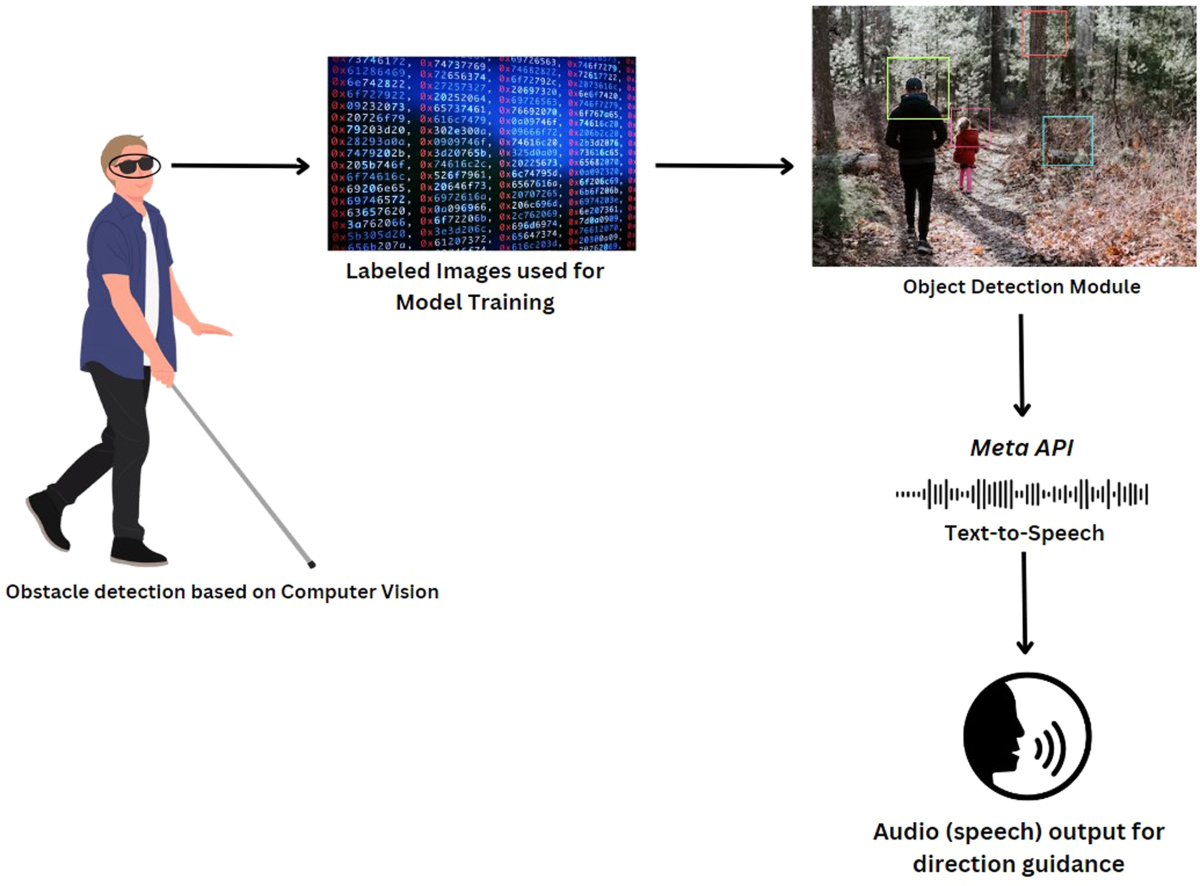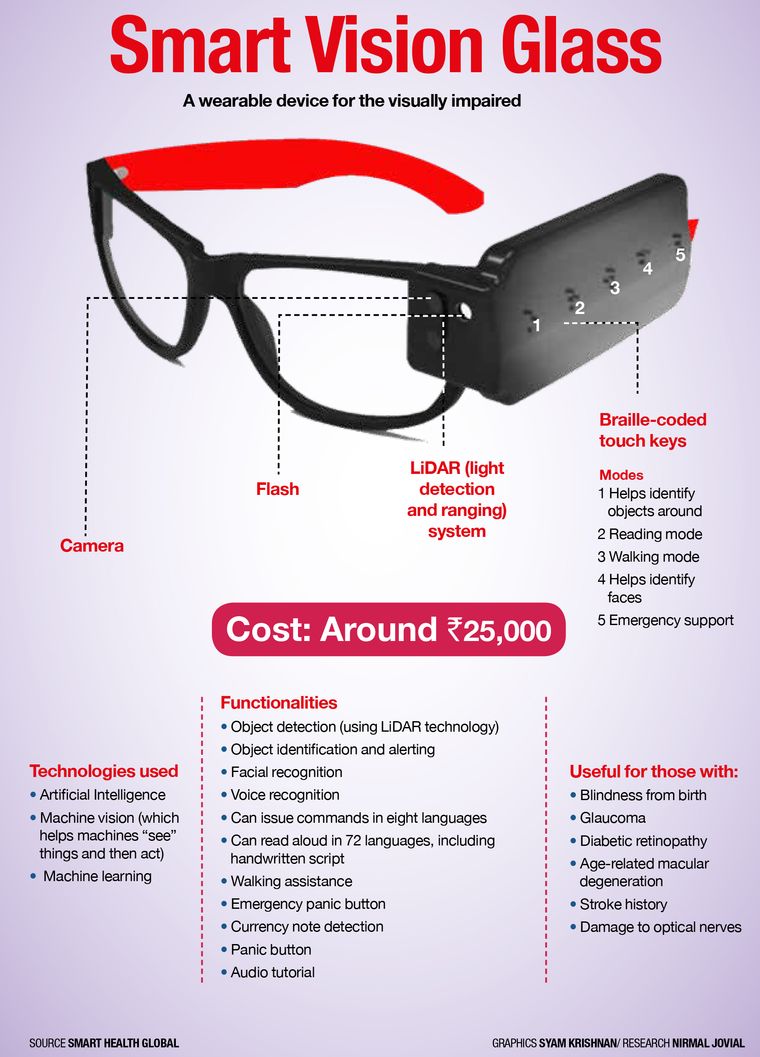Voice-Activated Assistive Devices: Empowering the Visually Impaired Through Innovation
Wiki Article
Enhancing Access Via Assistive Modern Technology for the Blind
The combination of assistive technology for the blind stands for a crucial innovation in availability, essentially altering just how individuals navigate their atmospheres and engage with culture. As we check out the diverse kinds of assistive devices and their substantial effects on daily living, it comes to be necessary to analyze just how continuous technological innovations are improving the landscape of support for the blind area.Summary of Assistive Technology
Assistive modern technology describes a variety of gadgets and software program developed to boost the abilities of people with impairments, consisting of those who are visually damaged or blind. This technology plays a crucial duty in advertising freedom and enhancing the lifestyle for individuals. By giving alternative techniques for accessing details and carrying out day-to-day tasks, assistive innovation encourages individuals to navigate their atmospheres more efficiently.
The growth and implementation of assistive technology accept a selection of principles intended at cultivating access. These principles include user-centered style, which focuses on the demands and choices of the individual, and the combination of innovation right into day-to-day activities. Such developments make sure that assistive tools are not just functional but very easy and additionally instinctive to use.
Additionally, assistive innovation includes a varied range of options, from low-tech alternatives like magnifiers to sophisticated innovations such as screen readers and Braille displays. The ongoing evolution of this field is driven by the need to address the distinct challenges faced by people with visual impairments (Wearable technology for low vision). As technology remains to breakthrough, the possibility for boosting availability and advertising inclusivity stays appealing, eventually adding to a more fair culture

Types of Assistive Gadgets
Many kinds of assistive devices are offered to support people that are blind or visually impaired, each created to resolve specific needs and challenges. These gadgets can be extensively classified right into 3 major kinds: low-tech, mid-tech, and sophisticated solutions.Low-tech gadgets include products such as magnifiers, Braille tags, and responsive maps. These are reasonably straightforward devices that boost the customer's capacity to interact with their environment without requiring complex technology.
Mid-tech devices frequently involve much more advanced features, such as digital magnifiers and mobile Braille note-takers. These devices can use performances like speech outcome, allowing users to accessibility details extra effectively.

Influence On Daily Living
The availability of various assistive tools significantly enhances the lifestyle for people that are aesthetically impaired or blind, affecting their daily living in profound ways. By incorporating modern technologies such as display visitors, Braille shows, and audio description services right into their regimens, individuals get higher autonomy and independence. These tools promote accessibility to info, allowing individuals to perform day-to-day jobs, such as checking out emails, browsing public areas, and taking pleasure in media material.Moreover, assistive tools equip individuals to engage even more completely in social interactions and area activities. The ability to use smartphones equipped with accessibility attributes permits seamless interaction and link with others. This connectivity cultivates a sense of belonging and reduces sensations of isolation.
In professional setups, assistive innovation supports performance by enabling people to total work jobs efficiently. Devices like voice recognition software program and specialized zoom devices make it possible for individuals to join the workforce on equivalent footing with their sighted peers.

Innovations in Modern Technology
Current technical improvements have actually considerably changed the landscape of tools offered for individuals that are visually impaired or blind. The assimilation of expert system (AI) and device knowing has generated applications that improve navigation and things acknowledgment. For instance, smartphone applications can now utilize AI to recognize and explain surroundings in real-time, providing customers with useful contextual information.Additionally, improvements in haptic innovation have actually caused the development of clever canes outfitted with sensors that detect barriers and offer responsive feedback. This encourages users to browse their environment with boosted confidence and freedom. Technologies in text-to-speech software application and braille display screens have enhanced the access of digital material, permitting for seamless interaction with numerous media.
Wearable technologies, such as wise glasses, are additionally making strides in aiding visual problems. These devices can offer enhanced reality experiences, overlaying crucial information onto the customer's field of view. Collectively, these innovations not only enhance the lifestyle for people that are blind but likewise advertise better inclusion in society. As innovation proceeds to advance, the potential for much more transformative tools stays on the perspective.
Future Trends and Innovations
As modern technology quickly progresses, the future of assistive devices for individuals that are blind holds enormous promise. Technologies in man-made intelligence (AI) and artificial intelligence are positioned to reinvent the way blind individuals interact with their settings. AI-driven applications are being developed to improve things recognition, permitting users to determine and navigate their surroundings with better ease and precision.
Moreover, improvements in haptic responses innovation are making it possible for the creation of tactile maps and navigating aids that offer real-time details through touch. These advancements not just enhance wheelchair yet also foster self-reliance. In addition, wearable devices geared up with increased fact (AR) features are emerging, using customers visual info with sound summaries, thereby connecting the space in between the electronic and physical worlds.
In addition, the combination of clever home technology provides new provision eye care chances for access, allowing individuals to control their living atmospheres with voice commands or smart device applications. As cooperation in between technology developers and the blind community continues, the concentrate on user-centered style will make sure that future advancements are eye care surgery center customized to fulfill the one-of-a-kind demands of this populace (Wearable technology for low vision). The trajectory of assistive modern technology promises a more empowering and inclusive future for people who are blind
Final Thought
In final thought, assistive innovation plays an essential duty in improving ease of access for people with aesthetic impairments. Continual improvements in technology and user-centered layout make sure that these tools provide efficiently to the unique demands of the blind neighborhood.The integration of assistive innovation for the blind represents a crucial development in accessibility, essentially altering just how individuals browse their environments and involve with society.Assistive innovation refers to a range of gadgets and software created to enhance the abilities of people with impairments, consisting of those who are visually damaged or blind. Wearable technology for eye care glasses low vision.As technology swiftly progresses, the future of assistive tools for people who are blind holds enormous assurance. The trajectory of assistive innovation assures a more inclusive and empowering future for individuals who are blind
In verdict, assistive technology plays a vital function in boosting accessibility for individuals with aesthetic impairments.
Report this wiki page